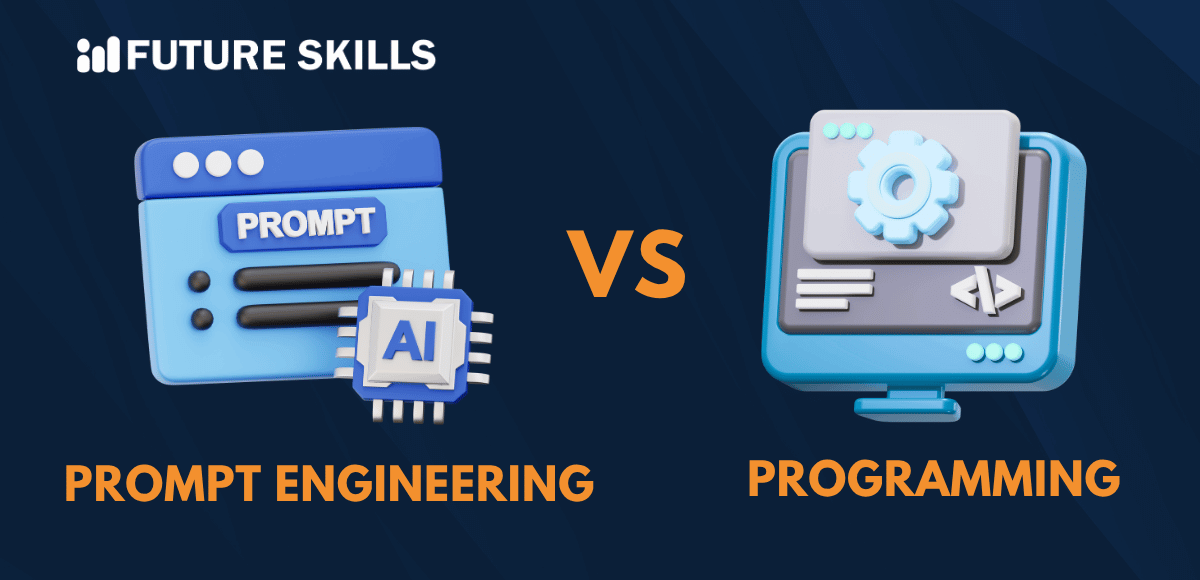Artificial intelligence prompts are the instructions for large language models that help them in understanding user queries. You can use code snippets, examples or text as prompts for AI models. The phrasing of a prompt plays a major role in defining the quality of output from the models. The prompt length in AI systems is one of the most notable factors that are believed to have an impact on output quality.
Prompts must be tailored to provide the information that an AI model needs to produce relevant and accurate output. Some people assume that longer prompts can describe their query more effectively and generate more productive outputs. However, long prompts can also affect the desired output in some tasks such as image generation. Let us find out whether prompt length can affect AI output quality.
Upskill yourself with the best prompt engineering techniques and advance your career in AI with our Prompt Engineering Certification Program.
Discovering How Prompts Work
The first step to determine the effect of prompt length on quality of AI outputs begins with an understanding of how they work. You can pass prompts for AI models as simple text in which you specify instructions for the model. The model will use natural language processing and deep learning to understand the user input in the prompt. AI models use the patterns learned from training data to generate contextually relevant and accurate responses to the input.
One of the most essential requirements to achieve the best results from a prompt is specificity. An AI model will generate ambiguous responses to the prompt “Write an essay”. You can use a long prompt example like “Write an essay of 500 words on the social impact of globalization in Asia”. The longer prompt provides more details to the AI model and can invoke a better response tailored to user requirements. It is also important to remember that longer prompts may not be useful for certain tasks, such as image generation.
Are Longer Prompts Really Useful?
The best practices to craft prompts for AI models focus on maintaining specific instructions and providing context. At the same time, experts suggest that you must use short and clean prompts to generate the desired response. The review of an experiment on the impact of prompt length on image generation with AI models has revealed that prompt length can lead to negative outcomes.
AI models have token limits and longer prompts did not help in generating the desired images in the experiment. You can also think of AI models like Claude Pro that offer support for larger prompts. The context window of Claude Pro and its API is 200,000 tokens, which can accommodate almost 500 pages of text. However, the best practices for prompt usage recommended by the same platform suggest that users must avoid vaguely large prompts.
The experiment also focused on need to understand token limits alongside the impact of text filters on quality of generated images. As a matter of fact, the use of text filters increases the prompt length and may alter the final output. With the reference of a popular AI image generation tool like DALL-E, the experiment emphasized the need for effective prompt restructuring.
Impact of Prompt Length on Output of AI Models
The empirical review of the outcomes of using longer prompts in image generation tasks creates a new perspective on prompt length. It is important to note that unlike an OpenAI system prompt, you will have to find the way to achieve desired results from the concerned AI model. System prompts are special instructions that can define the behavior of the popular language model by OpenAI. On the other hand, you have to create new prompts that are different from pre-defined prompts.
-
Scenarios Where Longer Prompts are Beneficial
You must know that longer prompts are useful in certain cases. Longer prompts can help in scenarios where the prompt can provide detailed description of the task you want to achieve. A long prompt can also help you offer details about the goals, specific points you want to address and the desired outcomes from an AI model. You can also use long prompts to provide important background information that can help the AI model with more insights.
-
Scenarios Where You Must Avoid Long Prompts
Users should refrain from longer prompts in situations where the AI model does not have adequate token limit. You should not use long prompts when unnecessary information can overwhelm the AI model and leads to inappropriate responses. Long prompts are not ideal in cases where you need quick answers as the prompt length can slow you down. Another notable thing about long prompts is that they create the risks of repeating information that may confuse the AI model.
Learn the ethics of artificial intelligence and become an AI specialist with our unique Ethics of Artificial Intelligence (AI) Course. Enroll today!
Is There Any Solution to Issues with Long Prompts?
The answers to questions like “How long should an AI prompt be?” depend on the model you are working with and your objectives. You can move over the concerns of negative impact on AI output quality due to prompt length with techniques like prompt compression. Prompt compression provides an effective answer to the issues with long prompts and enhances the performance of AI models.
Prompt compression is a NLP technique to reduce the length of prompts for improving the quality of AI outputs. It is a necessary tool for reducing the number of tokens in a prompt for different reasons. With the help of prompt compression, you don’t have to worry about token limits. On top of it, shorter prompts ensure faster processing time alongside reduction in costs. Another promising advantage of prompt compression is the assurance of more relevant responses.
Examples of Scenarios to Use Prompt Compression
Prompt compression helps in reducing the length of AI prompts by using different strategies. Some of the common approaches for reducing token count of a prompt include summarization of key points, removal of redundant information and using specialized algorithms. You can use prompt compression to craft the most cost-effective, relevant and productive outputs in the following scenarios.
-
RAG Pipelines
Retrieval-Augmented Generation or RAG pipelines are commonly found in chatbots for special tasks. They offer a blend of information retrieval and text generation capabilities that is useful in scenarios that depend more on contextual understanding. RAG pipelines need long conversation histories and old documents as prompts. The long prompts required for RAG pipelines may lead to higher costs that you can avoid with prompt compression.
-
Advanced Prompt Engineering
You can also find long prompt example in advanced prompt engineering techniques like chain-of-thought prompting. The prompt length in these techniques can reach almost thousands of tokens, thereby increasing processing time and cost. On top of it, the longer prompts can also surpass the token limits in different AI models. Prompt compression serves as the ideal solution in such cases to reduce prompt length alongside safeguarding its effectiveness.
Enroll in our Certified ChatGPT Professional (CCGP)™ Course and learn the best practices of ChatGPT to open new career prospects in AI.
Exploring the Strategies for Prompt Compression
The problems with long prompts cannot affect AI output quality when you know how to use prompt compression techniques. The three common strategies used in prompt compression include encoding, filtering, and knowledge distillation. Each technique offers distinct strengths for optimization of prompt length and efficiency. Let us take a look at the benefits of different prompt compression techniques.
-
Encoding
Encoding works through transformation of input text to vectors, thereby reducing length of the prompt without leaving critical information. The vectors can represent the essential meaning of prompts, thereby helping AI models in processing shorter inputs with more efficiency. You can use languages such as Base64 for encoding and decreasing token size for the prompt, thereby reducing its size.
-
Filtering
Another proven technique to reduce prompt length in AI models is filtering. As the name implies, filtering involves removing the unnecessary parts of a prompt to improve efficiency of AI models. You can implement filtering at different levels of a prompt, such as phrases and sentences or tokens. The primary objective of filtering revolves around retaining the relevant sections of a prompt that can generate the desired output.
-
Knowledge Distillation
Knowledge distillation is also an effective prompt compression technique in machine learning. It was designed as a solution for training a larger collection of models. Knowledge distillation involved training a smaller model to replicate the behavior of a more complex model. You can use knowledge distillation to reduce prompts instead of the model with the help of techniques like soft prompt tuning.
Final Thoughts
The prompt length in AI has been considered as one of the factors that can affect quality of AI outputs. Prompts serve instructions to the AI model which interprets them and provides the most accurate and relevant output. Longer prompts can seem like the ideal solution to get the best results from AI models as they include more information. However, longer prompts are not useful in all cases as evident from the performance of long prompts in image generation tasks with DALL-E.
Prompt length presents a notable concern in the case of AI models which have shorter token limits. You can rely on solutions like prompt compression to avoid any negative impact of prompt length on AI model outputs. Learn more about the importance of prompt engineering right now.







